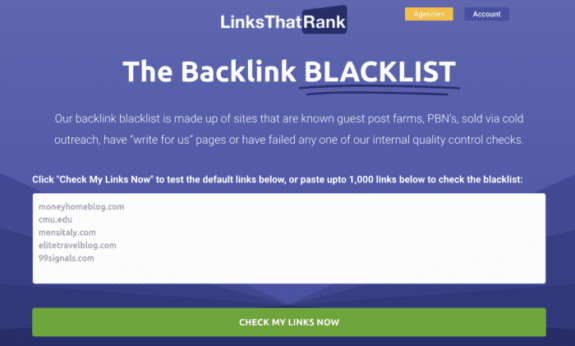There are many ways for getting links to a website but how will you decide its quality, its authority, its trust factor whether you should go ahead with the backlink giving website or not.When it comes to guest blogging, it is important to evaluate the quality of the website you are considering. Quality websites will have a positive impact on your blog, while low-quality websites can damage your reputation.It will take hardly 10-15 minutes to determine the quality of a backlink.
Methodology – How to check the link quality for a Guest Post
Let’s us check the factor’s first which are difficult to manipulate.
1) Check Google Indexing of a domain –
Google Indexing is the process of having a website’s content indexed by Google so that it can be found in search engine results.
So Would you like to guest post on a site that is not indexed by Google ?
No
You can check the Indexing of a site or domain by this command :
site:URL
e.g.
site:www.onlybacklinks.com
2 ) Check the organic traffic of a site :
Various tools provide the estimated traffic a website is getting, you can use the below mentioned sites to find the organic traffic
- Similarweb.com
- Neil Patel Website Traffic checker
- Ahrefs Site Explorer
- SEMRush Traffic Analytics
- SEranking.com

Also note the traffic trend, it should be upward and not downward.
Organic Traffic of a blog may be down for some time but if it constantly going down then there is red flag means there is Google penalty on that site or blog.
Now Let’s check the factor’s which are easy to manipulate but in high demand.
3. Check The Domain related metrics ( DA and DR)
Domain Authority and Domain Rating – ( DA and DR)
Any Quality check would be incomplete if we leave these two parameters DA and DR but we should not be too possessive about these two metrics as these parameters can be manipulated but it does not mean that these paramenters have less significance. You can check any Guest Post Marketplace, You will find these two parameters on almost every platform.
“Search for a website that’s already an authority and has plenty of natural traffic, and you’ll score the perfect two-for-one deal!”
4. Content Frequency –
Content frequency is an important factor to consider when evaluating a website. How often is the website updated? Is the content regularly updated, or is it outdated? You can check the frequency of content updates by looking at the website’s blog or news section. If there are no recent posts, it’s likely that the content is not being updated regularly. Content should be updated regularly, whether it’s weekly, monthly, or even daily.
5. Real Authors or Fake authors
When it comes to online content, it is important to be able to identify real authors from fake authors. To determine if the content is written by a real author or a fake author, look for evidence of their credentials. This could include a portfolio of published work, a professional website, or other verifiable sources. Additionally, look for signs of originality in the content, such as unique ideas and perspectives, as well as proper grammar and spelling. If the content appears to be copied or plagiarized, it is likely written by a fake author.
6. Social Media Channels
Authenticity is key when it comes to social media. To ensure that the content you are viewing on a website or blog is genuine, it is important to check the social media channels associated with the site. This includes verifying that the accounts are active, the content is up-to-date, and that the accounts are managed by the website or blog owner. If the social media channels associated with the site appear to be inactive or out of date, it is a good indicator that it is not a genuine website.
7. Part of PBN
Part of PBN is a term used to describe a website that is part of a Private Blog Network (PBN).To identify if a website is part of a PBN, look for signs such as
- high number of outbound links
- duplicate or paraphrase content, and a lack of original content.
- Same Design
- Same email address
8. Low Quality and Short Blog Posts
Low quality content can be defined as any content that does not provide value to the reader. This can include content that is not well-researched, not well-written, or not relevant to the topic at hand. Examples of low quality content could include blog posts that are filled with spelling and grammar mistakes, articles that are too short to be considered comprehensive, or blog posts that are simply re-hashed versions of existing content.
If the site is just publishing content without checking its quality then you should avoid that site for guest post.
9. Comments for site evaluation
Is there is any real communication on website by checking its comment section ? When evaluating a website, the comments section can be a great way to gauge the level of communication on the site. For example, if the comments section is filled with thoughtful and engaging conversations, it is likely that the website is fostering an active and vibrant community. On the other hand, if the comments section is empty or filled with spam and unrelated content, it may be an indication of a low quality website. Ultimately, the comments section can be a great indicator that it is not a good website for guest post.
10. Check the Niche –
When looking for quality backlinks, it’s important to make sure that the website is related to your niche. This is because a website that is related to your niche will be more likely to link to your content, and the backlinks will be more likely to be of higher quality. You can ask these questions
Does it provide information that’s relevant to your niche? Is it well-known in your niche?
Is the content engaging and well-written? If it’s not, then it’s probably not a great fit for your backlinks.
Taking the time to check if the website is related to your niche or not will ensure you get quality backlinks.
11. Link Location and Anchor text
Where the link is located and the anchor text used can make a huge difference. For example, if you have a blog about fashion, you want to make sure that a backlink from a fashion website is placed in a relevant article or blog post and that the anchor text used is related to fashion. That way, search engines like Google will know that the link is related to your niche and will reward you with a higher ranking in the search results.
12. Think about long term
When building a link, it’s important to think about the long-term implications of your decisions. Will this link still be relevant in a few years? Will the link you’re using still be supported? These are all important questions to consider when you are building a backlink, as you don’t want to invest your time and resources in something that won’t be around in the future.
13. The Backlink Blacklist
Last but not the least Check out the free backlink blacklist tool! It has data on over 60,000 domains you don’t want links from—including those that are usually pitched in cold emails or sold on sites like Fiverr.
You can check it here : linksthatrank.com/backlink-blacklist/ –
“But i think you should still manually review a site for quality check”
Other Red Flag Parameters
- Too Many Ads on site
- Poor Site Design
- Hard to navigate
- Irrelevant site categories
- General Information on About Us Page
Conclusion:
You can check the website trustworthiness on above parameters and take the right decison.
In conclusion, there are several key points to consider when evaluating website quality for guest blogging. Quality websites should have high-quality content, a modern design, an intuitive user experience and a good reputation. By taking these factors into account, you can ensure that you are choosing the best website for your guest blogging needs.









user interaction matters and it is one of the quality signal.